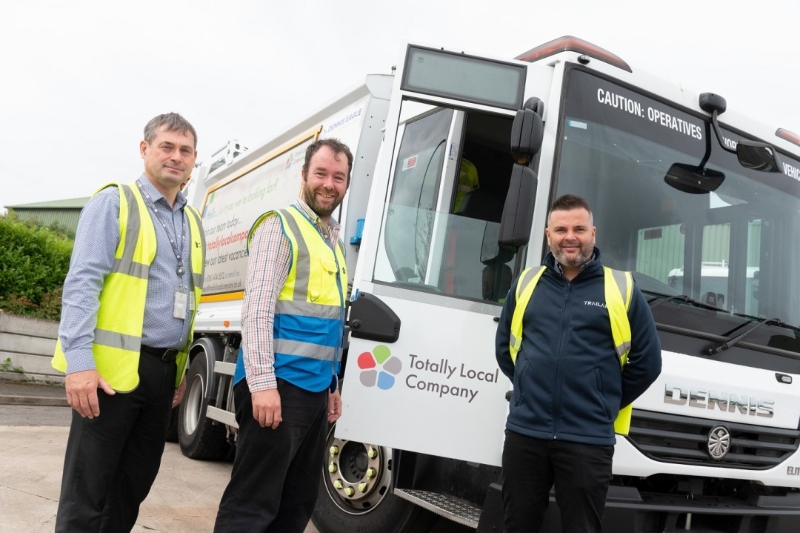The transport innovation company TRAILAR argues that their solar solutions will help local authority fleets reduce their carbon emissions. LAPV reports.


Councils are a unique and powerful partner in achieving net zero ambitions with the ability to impact more than a third of all emissions from villages, towns and cities. COP26 set out the case for why councils are best-placed to deliver green initiatives within local communities and reaffirmed the trust that people have in councils to tackle climate change in their local area.
As a result, a number of councils up and down the UK are now following in the footsteps of significant blue chip companies like Aldi, DHL, Hovis, Cadent and Currys in utilising innovative solar technology to significantly reduce their fleet emissions and aid their ambition of reaching net zero carbon in advance of timescales declared by the Government.
On their journeys to create more climate friendly areas, local authorities are now taking action and teaming up with TRAILAR. TRAILAR is a British multi-award winning transport innovation company that has been recognised as a key contributor to decarbonising the UK transport industry.
With a mission to make commercial vehicles ‘greener’ and born from the idea to innovate and permanently evolve the transport industry, the solar solutions from TRAILAR are listed as best in practice in the Government’s decarbonisation plan, Decarbonising Transport: a better greener Britain. TRAILAR provides a unique fuel-saving product. Dispel any ideas of solar panels being similar to the ones placed on the roofs of houses. TRAILAR fit ultra-thin, lightweight flexible solar mats to the roof of commercial vehicles, saving huge amounts of fuel and reducing CO2 emissions.
The technology has a simple solution architecture allowing for a large array of vehicle types, including refuse trucks, road sweepers, crew cabs, Luton vans, service vans, minibuses and electric vehicles, to benefit from solar. The full transport system weighs less than 30kg and includes a Smart Charge Controller designed to proactively manage the vehicle battery.
The mats are connected seamlessly to the Smart Charge Controller that fits to the vehicle chassis. The solar power generated becomes responsible for powering all onboard electrical equipment including tail lifts in a clean efficient way removing the necessity of the alternator to power up, minimising the use of fuel.
Capturing accurate vehicle data and tracking the benefits
TRAILAR supports more than 100 commercial fleets in 20 countries around the world, supporting them to tackle emissions. They also help with one of the many challenges faced by municipal fleet operators: capturing data from their vehicles. TRAILAR provides real time telematics and makes use of the system’s 4G mobile connectivity. Meanwhile, the TRAILAR insights platform provides the end user with a web-based solution to give visibility of operational insights such as GPS tracking, fleet utilisation, battery conditions, fuel and CO2 savings across the vehicles the solar mats are fitted to. The telematics platform comes as standard. With climate change and the need for rapid decarbonisation to reach net zero greenhouse gas emission by 2050 firmly in the hearts and minds of the public, solar is a strong solution for many local authorities and their fleets. TRAILAR systems can be fitted to new vehicles whilst in production or retrofitted to existing vehicles, diesel or electric – both providing a quick return on investment.
Denny Hulme, managing director at TRAILAR, commented: ‘As a company we’ve set ourselves the ambitious target to save 100 million litres of fuel and 268,000 tonnes of CO2 by 2025 and we’re so proud to be working with circa 30 local authorities within the UK to contribute to this figure. However, we would like to do more to help!
‘Councils have the opportunity to play their part in rapid decarbonisation by implementing TRAILAR within their fleets. The benefits of the system speak for themselves and the ROI makes financial sense when you consider the lifespan of the types of vehicles that councils operate. Not only that, our telematics platform gives councils a platform to accurately gauge the benefits brought to their community from solar and report their fuel and Co2 saving figures.’
This article first appeared in the spring issue of LAPV. To subscribe for free click here.